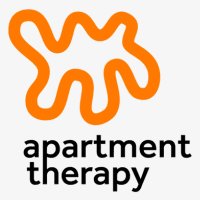As a kid, reading is an important part of education. Kids are taught to read from childhood. As children grow they learn more advanced things in reading. A test for reading level helps in knowing the speed of the child’s reading. A kid who reads quickly is more likely to have a better memory power and can grasp things faster than one whose reading is slow or average.

A reading test gives an idea about how good a kid is at grasping things and understanding concepts through words and language.
Table of Contents
The Burt Reading Test Assessment
The Burt Reading Test Assessment is a test for reading levels, which includes various levels. It is an age-appropriate assessment tool to measure the key components of literacy as defined by the National Reading Panel.
Purpose
The Burt’s reading assessment helps parents and teachers to understand what stage their child has reached in terms of his/her literacy skills and will help them to work on the weaknesses of their child for a better future.
This test should be taken by children who are in pre-kindergarten to third grade.
The test hones the skills of a child in recognizing letters, words, and sentences. It helps in assessing their reading level.
This test is non-verbal and evaluation of a child doesn’t depend on language; it is independent of print exposure or motivation.
Read: What Your Child Should Know by the End of Kindergarten?
Different reading levels for Kids

There are 4 levels in this test – preprimer, primer, first, and second.
It contains 160 words in each level and the child will read out 80 words from each level. This test is to be given to a kid within their reading ability level.
For example: If a 3-year-old kid is giving this test then he/she should be asked to read 1st and 2nd level words.
If a kid is of 5 years age, he/she should be asked to read words from 3rd and 4th level only.
For each level, 20 words start with the ‘CVC'(consonant- vowel – consonant) pattern and 20 words that start with the ‘CVCC’ pattern. So for each level, there are 40 words to be read.
Scoring
This test is scored objectively by the examiner who doesn’t know the identity of the child. The words which a kid has read correctly will be counted and tabulated as per their respective levels. Besides word reading ability, this test also comprises various other skills like phonological awareness, vowel sounds, consonant sounds, and syllables.
The raw scores obtained from the test are then converted into a scaled score that ranges from 5 to 19 which can be used to compare a child’s reading level with others.
Read: What You Need to Know Before Your Child’s First OT Session
So in this way, the Burt Reading Test helps in knowing the reading level of kids accurately. It helps parents and teachers to plan a strategy for their child’s better future.
Frequently Asked Questions
What is the purpose of this test?
The Burt Reading Test gives an idea about how good a child is at grasping things and understanding concepts through words and language. It helps parents and teachers to understand what stage their child has reached in terms of his/her literacy skills.
What age group should be tested?
The Burt’s reading assessment is given to kids who are in pre-kindergarten to third grade. This test is non-verbal so it doesn’t depend on the language; it is independent of print exposure or motivation.
It should be kept in mind that if given to a kid who doesn’t fall within the testing range, then the results will not be accurate and thus one can draw wrong conclusions.
What level reading should a 1st grader be at?
A 1st grader should be at the level of First or Second.













